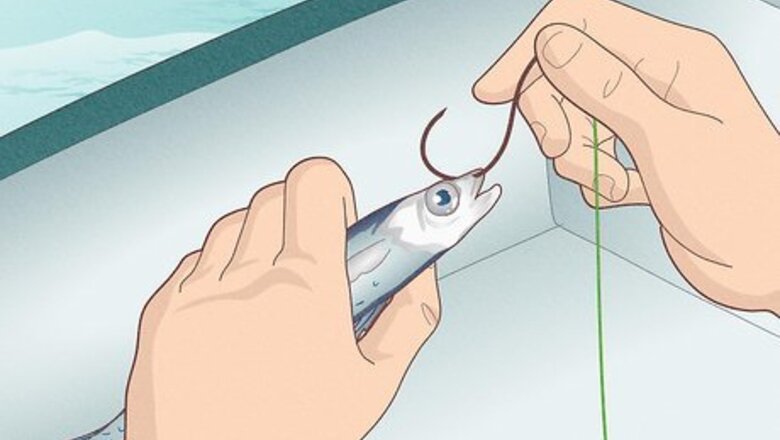
views
Set Your Bait and Wait for Your Catch
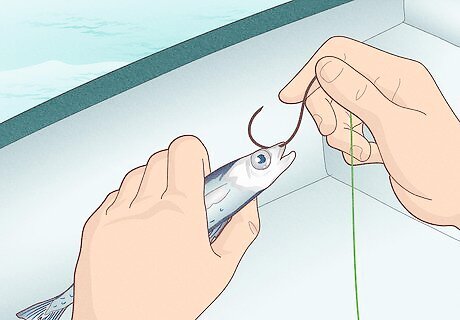
Hook live bait, like whiting or herring, through the nose. Place your bait at various depths to create an attractive setup, setting out the shallowest lines first and the deepest lines last so that the lines don't become tangled.

Cut whiting or herring in 3 to 4 pieces to create a chum slick. Toss the pieces off of the transom until you have a visible chum click. Toss in new pieces every minute or so to keep the chum slick constant. Make sure that your hooked baits are within the chum slick.
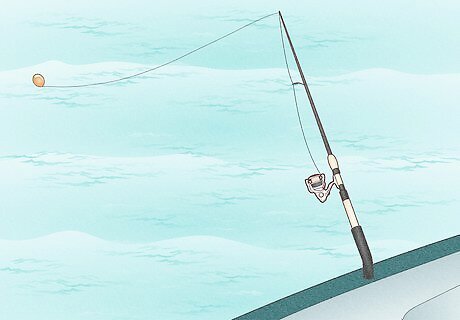
Set the balloon and allow the bait to drift away from the boat.
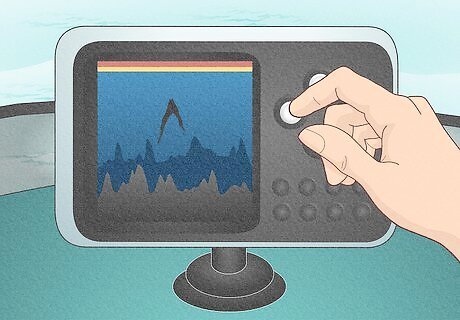
Watch your sounder. If you are finding fish at different depths than the depths at which you set your bait, then you may want to change your bait depth. A bluefin will be 20 to 30 feet (6 to 9 m) on your fish finder and will have a characteristic hump shaped like an upside-down "V."
Hooking the Bluefin

Listen for a balloon pop. If you hear a pop, your rod is bent and line is stripping off of the reel at top speed, then you've probably hooked a bluefin.
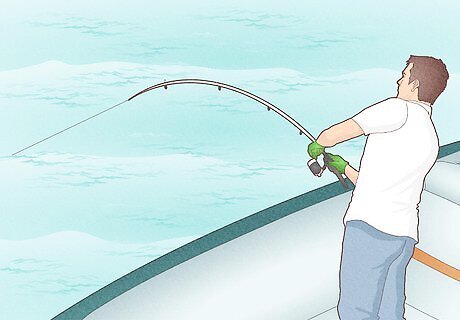
Jump on the rod and reels and used a gloved hand to make sure that the line stays taut. Keep the rod tip pointed at the fish.
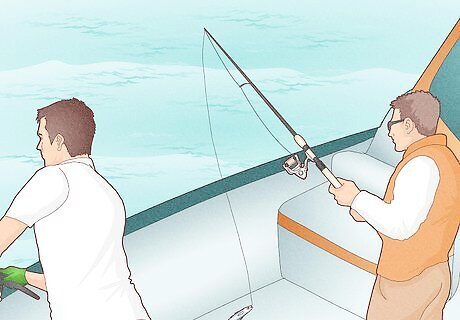
Have other people wind up the other lines and store the rods. The rods can be stored in the cabin or in the opposite gunwale from the hooked line.

Release the anchor ball and start the engines. Clear the deck as needed.

Move the hooked rod to the fighting swivel holder.
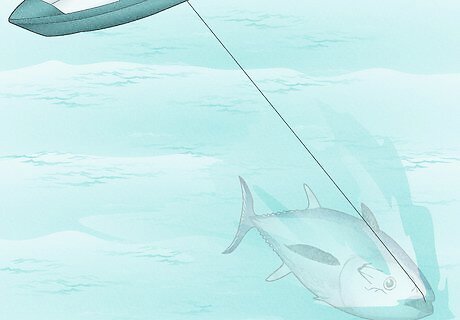
Determine the direction of the bluefin. Steer the boat so that the line is 45 degrees aft and off of the gunwale.
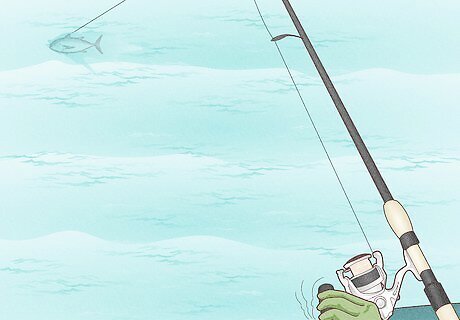
Keep the line tight during the initial runs. If the bluefin turns and starts to swim toward you, your line may go slack and fool you into believing that your catch got away. Reel as fast as you can to keep up with the fish and to restore the tightness of the line.
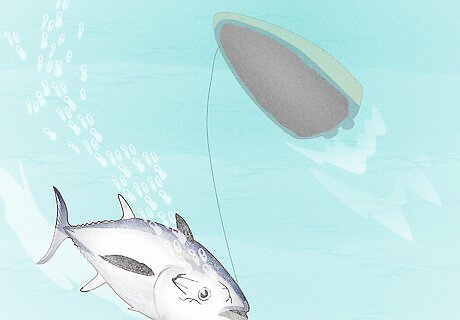
Watch for the death circle. After a few runs, the tuna will start to circle under your boat. Apply constant pressure to wear down your fish by inching the drag up and switching to a lower gear on your reel to bring the fish up toward the boat. Make sure that you pull the fish away from your engine so that your line doesn't get caught in the props.
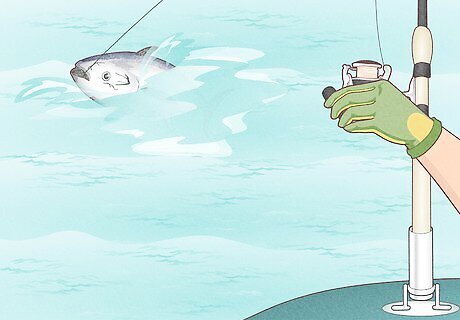
Prepare for another run when the fish surfaces. When your bluefin sees your boat, it may make another break for it.

Harpoon the fish when it is spent and near the boat. Aim to get the dart behind the fish's shoulder.
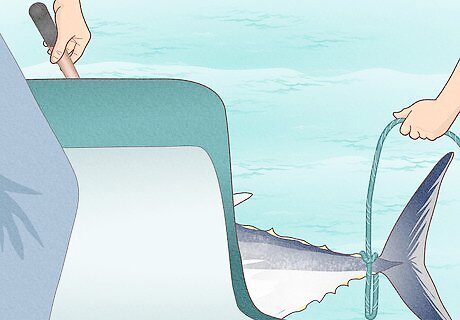
Pull the fish in at a sidewards angle to give the gaffer a good shot. Gaff the fish in the head and pull it against the boat to tail rope it.
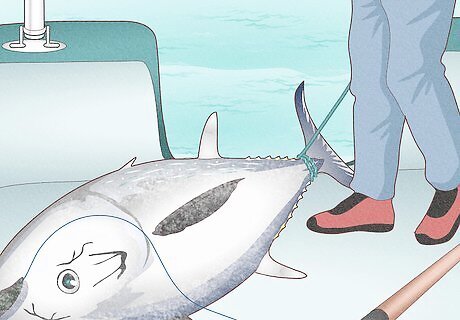
Hoist the fish onto the boat and bleed it while it's still alive. When the fish comes over the side of the boat, put your reel in free spool and keep your finger on the spool to keep the rod from loading up with the fish hits the deck.

Take out the hook. If your fish swallowed the hook, then cut your line to release the fish.
Other Recommendations
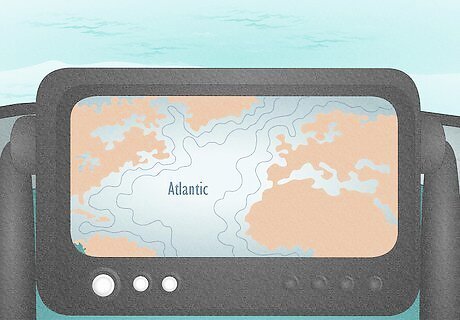
Journey to the Atlantic and to adjacent seas to find bluefin tuna. Bluefins live in the Atlantic Ocean and spawn either in the Gulf of Mexico or in the Mediterranean Sea. Every spring, they migrate to the places where they were born. As they travel back and forth between spawning grounds, they can be caught off of the North American coast, particularly in the Virginia/North Carolina area and off of Massachusetts, New Hampshire and southern Maine. They also congregate in the Eastern Atlantic. Bluefins used to populate the Black Sea, although their population has dropped significantly here.
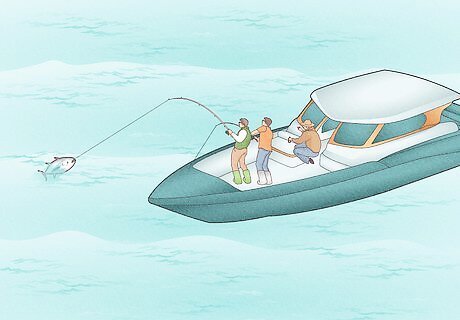
Take a few chartered fishing trips to catch bluefin before you strike out on your own. You'll learn about the procedure and about the equipment that you'll need, and you'll learn whether or not the sport is for you. Look online to find charter cruises in your area, particularly around Cape Cod and Cape Hatteras. Ask the captain whether you get to keep your catch (or if there is a weight limit) or if the fishing is catch and release. Your catch, if you get to keep it, may not be something you can legally sell. Have a plan for what you're going to do with all of this fish--sushi, anyone?

Know the regulations. Fishing regulations can be very confusing. Call 1-888-USA-TUNA for permits and to explore questions that you may have. Also, know your catch quota. Check with the NFMS for annual daily catch limits.

Try kite fishing. Kite fishing allows an angler to keep a live bait swimming on the surface. The kite physically lifts the bait, and prevents the bait from swimming downward. The result is a live bait, virtually half out of the water, swimming and thrashing frantically on the surface-basically ringing the dinner bell for any tuna in the vicinity.

Get the appropriate permits from the NMFS before you start fishing.




















Comments
0 comment